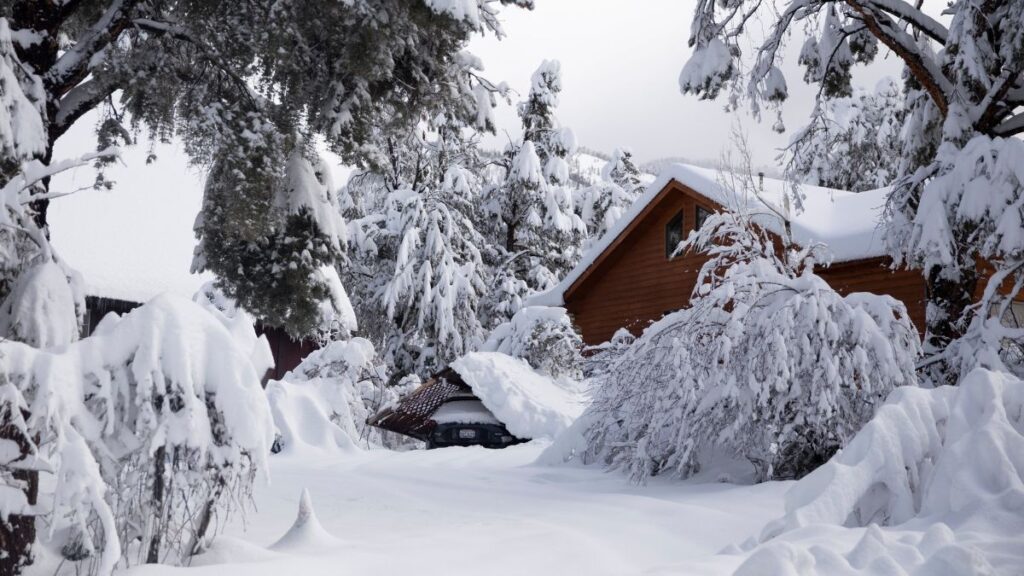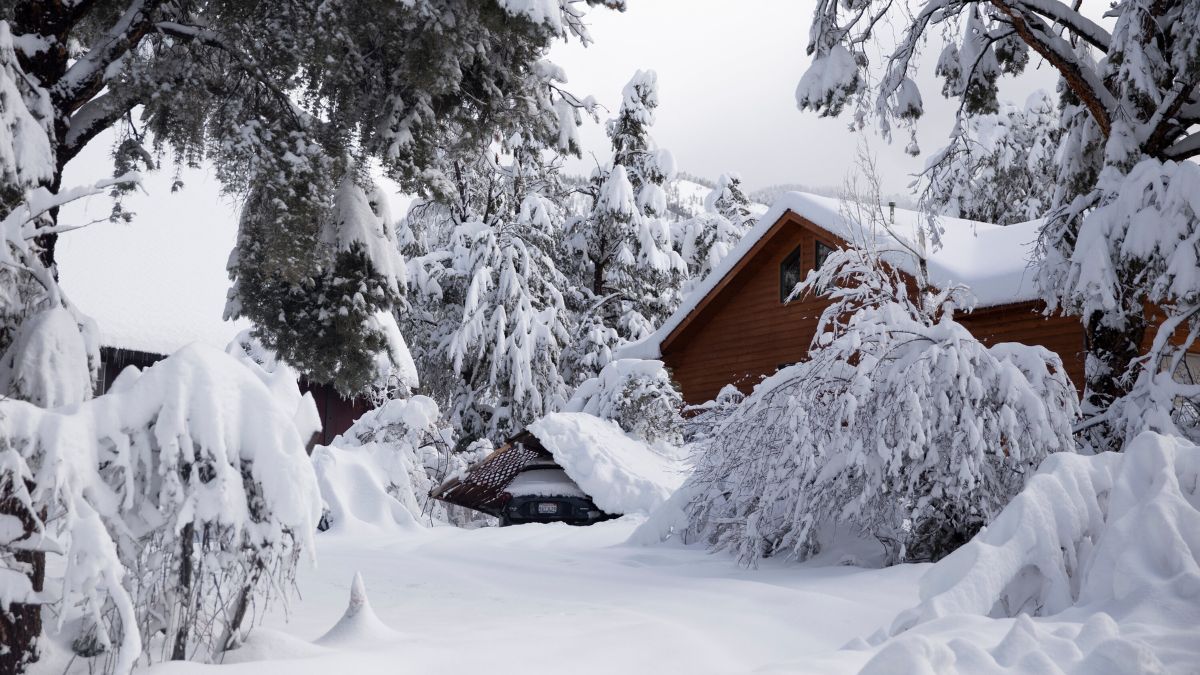Yes, it occasionally snows in Los Angeles, although it is rare. The city’s Mediterranean climate and coastal location make it more prone to mild winters and warm temperatures. However, certain weather patterns can bring cold air and precipitation, resulting in snowfall in and around Los Angeles.
Los Angeles is a city known for its warm and sunny climate. Thinking of Los Angeles conjures up images of palm trees, beaches, and perpetual summer. However, every now and then, there is speculation about the possibility of snowfall in the “City of Angels.”

In this article, we will explore the question, “Does it snow in Los Angeles?” and delve into the rare instances of this natural phenomenon in Los Angeles.
Location Overview
Los Angeles, often referred to as LA, is a sprawling city located on the southern coast of California in the western United States. Here’s an overview of its location:
- Geographical Coordinates
Los Angeles is situated at approximately 34.05 degrees north latitude and 118.25 degrees west longitude.
- Coastal Location
Los Angeles is located along the Pacific Ocean, offering a beautiful coastline that stretches for approximately 75 miles. The city enjoys a Mediterranean climate influenced by the ocean, resulting in mild winters and warm summers.
- Southern California
Los Angeles is part of the larger region of Southern California, which includes other major cities such as San Diego, Santa Barbara, and Anaheim. It is known for its diverse landscapes, ranging from sandy beaches to rugged mountains.
- Surrounding Counties
Los Angeles County is the most populous county in the United States and encompasses the city of Los Angeles. It shares borders with several other counties, including Orange County to the south, Ventura County to the west, and San Bernardino County to the east.
- Inland Geography
While Los Angeles is known for its coastal areas, it also features diverse inland geography. Mountain ranges surround the city, including the Santa Monica Mountains to the northwest, the San Gabriel Mountains to the northeast, and the Verdugo Mountains to the northeast.
- Major Highways
Los Angeles is well-connected by a network of highways, including Interstate 5 (I-5), which runs north-south through the city, and Interstate 10 (I-10), which spans east-west. Other significant highways include the 101, 110, and 405 freeways.
- Nearby Airports
Los Angeles is served by several airports, with the primary international gateway being Los Angeles International Airport (LAX). Other airports in the region include Hollywood Burbank Airport (BUR), Long Beach Airport (LGB), and John Wayne Airport (SNA) in Orange County.
With its strategic coastal location, diverse geography, and extensive transportation infrastructure, Los Angeles is a vibrant and prominent city in Southern California, offering a wide range of cultural, entertainment, and economic opportunities.
Geography and Climate of Los Angeles
In Los Angeles, the geographical significance of snowfall is limited due to its rarity. However, when snow does occur in nearby mountainous regions, it contributes to water resources, influences local ecosystems, and offers recreational opportunities.
Los Angeles enjoys a Mediterranean climate characterized by mild, wet winters and hot, dry summers. The region’s proximity to the Pacific Ocean and the presence of the California Current result in relatively stable and pleasant weather year-round.
However, the city’s unique geography and elevation differences within the area can create localized variations in climate.
Historical Snowfall Record
While snow in Los Angeles is infrequent, history has recorded several memorable snowfall events. One such event occurred on January 15, 1932, when a rare snowstorm blanketed the city.
Another notable snowfall occurred on January 9, 1949, covering parts of Los Angeles in a white layer, surprising and delighting residents. More recently, on February 21, 2019, Los Angeles and its surrounding areas witnessed a rare snowfall, captivating the city with its scenic beauty.
Winter Season & Snowfall Pattern
While Los Angeles experiences a mild winter season, snowfall is indeed a rare occurrence in the city. The average winter temperature in Los Angeles ranges from 50 to 68 degrees Fahrenheit, making snow unlikely to form.
There are regions near Los Angeles where winter brings the possibility of snow. The foothill areas, such as the San Gabriel Mountains, San Bernardino Mountains, and Santa Monica Mountains, have higher elevations that increase the chances of snowfall during colder months.
Snowfall in Los Angeles can create excitement and wonder among residents who are unaccustomed to such weather conditions. However, it can also bring challenges and disruptions to the city’s infrastructure.
With limited snow removal equipment and experience, even a small amount of snow can cause traffic delays and closures of roads and highways. Additionally, residents may face difficulties in commuting and disruptions to daily activities.
Locations to Enjoy Snow
As Los Angeles itself rarely sees snowfall, you would need to venture outside the city to find locations where you can enjoy the snow. Here are some nearby areas where you can experience snowy activities:
- Mountain High
Located in the San Gabriel Mountains, about 75 miles from Los Angeles, Mountain High is a popular ski resort offering winter fun for all skill levels.
It features a range of slopes for skiing, snowboarding, and tubing. The resort provides equipment rentals and lessons, making it accessible for beginners as well.
- Big Bear Lake
Big Bear Lake is a scenic mountain resort town located approximately 100 miles northeast of Los Angeles. It offers a picturesque setting for snow activities.
Snow Summit and Bear Mountain are two prominent ski resorts in the area, providing excellent skiing, snowboarding, and snowshoeing opportunities.
- Mount Baldy
Mount Baldy, officially known as Mount San Antonio, is a prominent peak in the San Gabriel Mountains. It offers stunning views and snow-covered slopes during the winter months. It is located about 40 miles northeast of downtown Los Angeles.
- Wrightwood
Wrightwood is a small mountain community situated in the San Gabriel Mountains, approximately 80 miles northeast of Los Angeles. Mountain High Ski Resort is located here, providing skiing, snowboarding, and tubing options. The town itself has a charming atmosphere and offers cozy lodges and restaurants.
- Mount Pinos
Mount Pinos is located about 80 miles northwest of Los Angeles and part of the Los Padres National Forest. It is a popular spot for snow play, including sledding, snowshoeing, and cross-country skiing. The area offers scenic trails and breathtaking views, providing a peaceful winter escape.
Factors Influencing Snowfall
Elevations, Pacific storms, cold air masses, weather patterns, La Niña, and Santa Ana winds influence snowfall in Los Angeles and nearby areas. Higher elevations, winter storms from the Pacific, and the convergence of cold air and moisture create conditions for snowfall in the region.
Apart from all these, the city’s coastal location and warm ocean currents of the Pacific Ocean contribute to the rarity of snowfall.
Conclusion
While snowfall in Los Angeles is rare, it does happen occasionally, particularly in the surrounding foothill and mountainous regions. The city’s Mediterranean climate and coastal location create an environment more conducive to sunny beaches than winter wonderlands.
Nevertheless, when snow graces the City of Angels, it brings excitement and challenges, offering a rare glimpse into a different side of Southern California’s climate.
